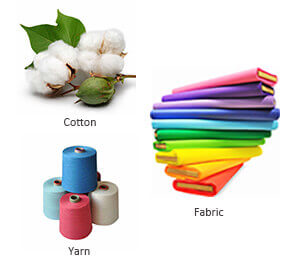
NewsInformation Center
Five new textile printing and dyeing technologies
2021/11/19
Textile printing and dyeing is an indispensable part of the textile industry. There are many modern technologies in textile printing and dyeing technology. Then with the continuous enhancement of human environmental protection and health awareness, environmental protection technology and harmless printing and dyeing technology are becoming more and more. Highlighting its market advantages, this article will give you a brief introduction to the characteristics of the current five new dyeing technologies.
1. Ecological dyeing
In the future, dyeing and processing will be carried out on a safer and more complete production and processing chain. Fiber materials, dyes and chemicals are environmentally friendly and do not have harmful effects on the human body and the environment; production and processing are safe and ecological, and will not damage resources and It pollutes the environment; it is highly efficient and highly automated; the products are safe, healthy and multifunctional, and the entire production chain is strictly monitored. In order to establish a clean dyeing processing chain, it is necessary to work together from the entire process of raw materials, product design, processing and application to establish a clean dyeing production system.
2. New fiber and new tissue structure staining
With the rapid development of science and technology, there will be more and more new fibers, especially a variety of fiber composite textile materials. The organization and structure of textiles will become more and more complex, and the required performance will become more and more new. The processing, including dyeing, will become more and more complicated. At present, there are 5-6 kinds of textile fibers in foreign countries. In the future, there will be more and more kinds of fibers in my country's textile products. The types of dyes and chemicals that are compatible with this will also increase. Therefore, the dyeing process and dyeing methods will also develop rapidly, and at the same time, the dyeing theory will continue to be studied in depth.
Some new dyeing technologies currently being developed will gradually mature and be applied. For example, high-efficiency short-process dyeing, electron beam and ultraviolet rays and other ray fixation, ink-jet printing and dyeing and electronic phase printing and dyeing, etc., newer dyeing technology will continue to appear. ?

3. Non-water and water-saving dyeing
At present, water is still an indispensable medium for dyeing, and more water is used and more sewage is discharged. Water-saving dyeing, including dyeing with low liquor ratio and low liquid-carrying rate, will continue to develop. In addition, it is recycled water. The processed aqueous solution is purified to make the water reused.
The development of non-aqueous dyeing will be paid more attention. The supercritical CO2 fluid dyeing currently studied, although it is unrealistic to completely replace water as a dyeing medium, it is expected to be applied in some special dyeing systems. Another non-aqueous dyeing medium, namely ionic liquid, may also be developed as a dyeing medium. Because it has no vapor pressure, dyeing under normal pressure, the dyeing equipment is simple, and by adjusting the hydrophobic composition of the ionic liquid, it can be used as a variety of dyeing media. The dyeing medium of the dye. Our experiments have proved that not only direct, acidic, reactive dyes and plasma dyes have good solubility and dye uptake, non-ionic dyes, such as disperse dyes, also have good dye uptake, so it is a better dyeing medium.
A common problem of non-aqueous media dyeing is to improve the recycling rate of these media and reduce costs. In addition, some new non-aqueous dyeing media will be developed. ?
4. High-information network and high-automation dyeing
The future is a highly informatized network era, which will also be reflected in the dyeing process. In order to adapt to efficient and rapid response, a variety of communication methods will be established, from market demand, raw material supply, product design, order delivery, technical information analysis to the connection and management of various production processes, etc., will be established on the information network.
In the future, dyeing is also highly automated. In order to reduce labor and improve processing efficiency and quality, all processing is carried out under the control of automated equipment, which will greatly improve the production environment, and unmanned production workshops will become more and more common.
5. Bionic coloring
The composition and structure of various substances in nature are the most reasonable configuration, and their functional efficiency is the highest, including the colors produced by various objects.
The colors of natural objects, especially living beings, are colorful and colorful, and there are many ways to produce colors. They can be roughly divided into two categories: pigment coloration and structural coloration. Pigments are not only different in structure, they also have their own special functions. For example, although chlorophyll is green, its function in plants is mainly photosynthesis, which converts light energy into electrical energy, chemical energy and biological energy. Structural color is produced by scattering, interference and diffraction of light. The beautiful color of some animals, such as butterflies, is closely related to the color of structure. The color of many objects is the combination of color of pigment and color of structure. of. At present, there are colored fibers and films with structural color. It is a way of coloring without chemicals and pollution. Many special textiles with structural color will be paid more attention. In addition, there will be more and more new bionic coloring products. The bionic colored textiles will be multifunctional. The products not only have beautiful colors, but also have antibacterial, moisturizing, anti-ultraviolet and light-heat, light-electric conversion functions. Therefore, the dyes used can not only produce color, but also have other functional properties. In the future, the application of some functional dyes will increase, and new functional dyes and chemicals will be developed.
Previous: Tell about the technological nature of textile fiber testing equipment
N e x t : Causes of frosting in the constant temperature and humidity box



